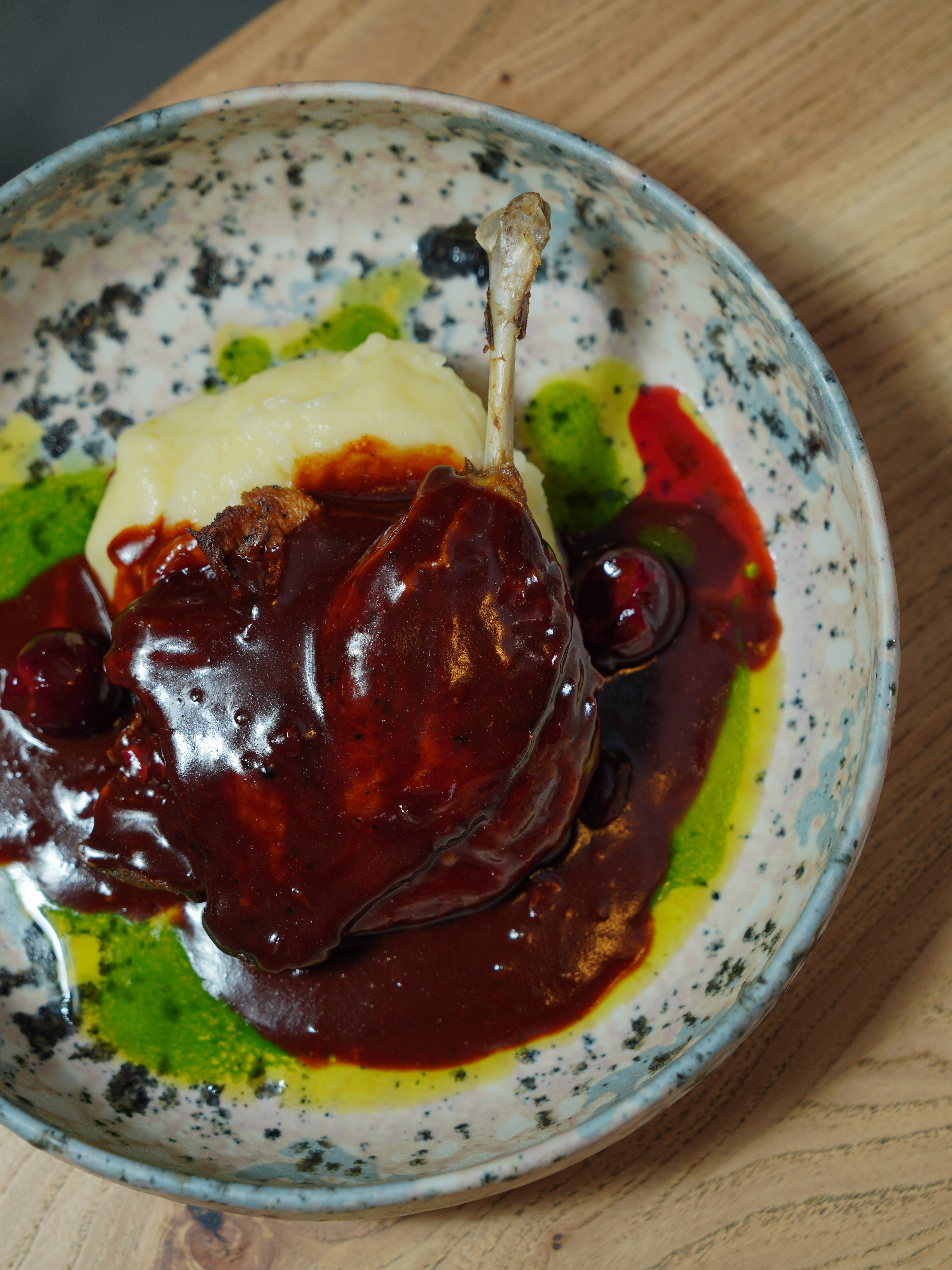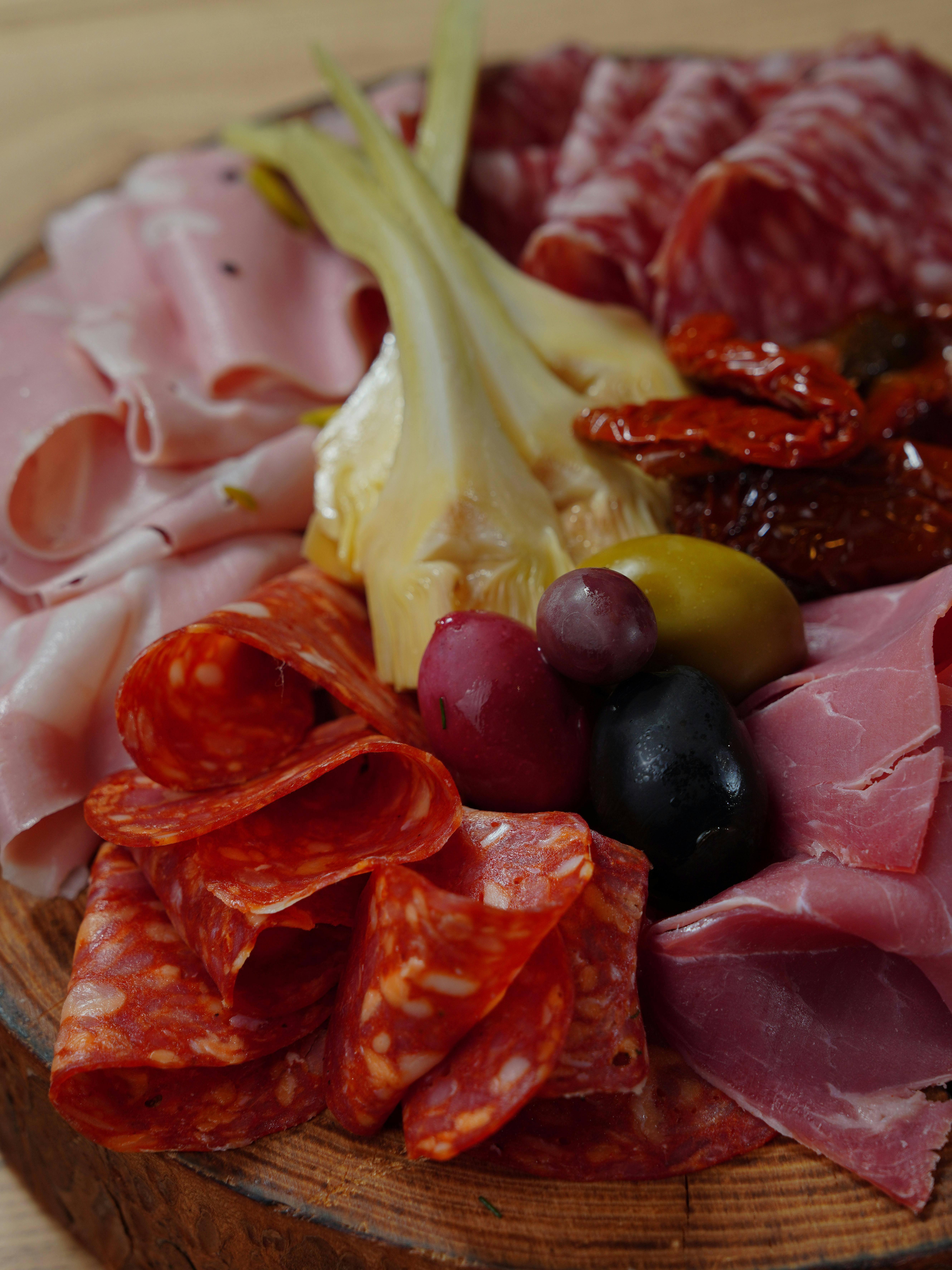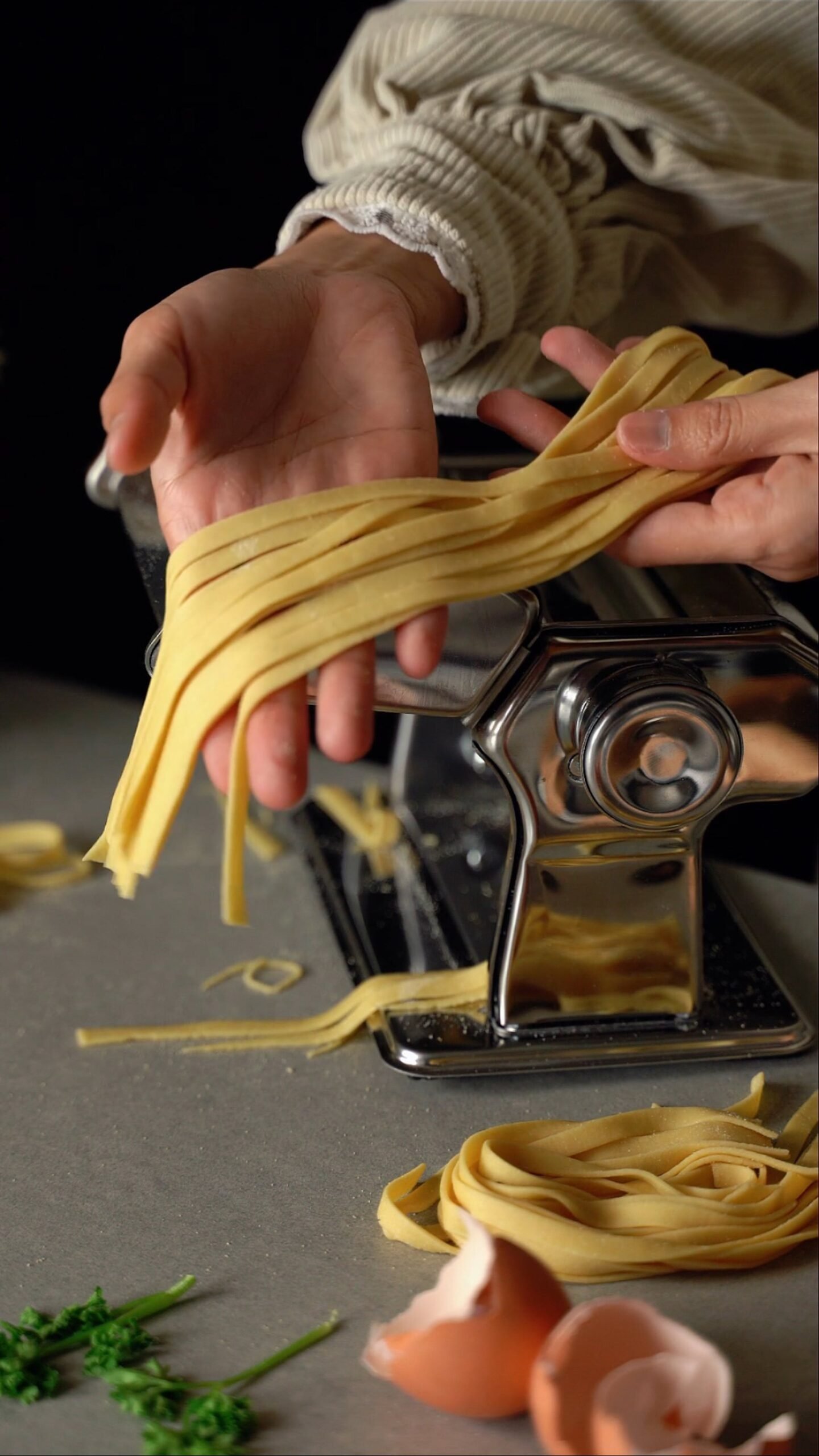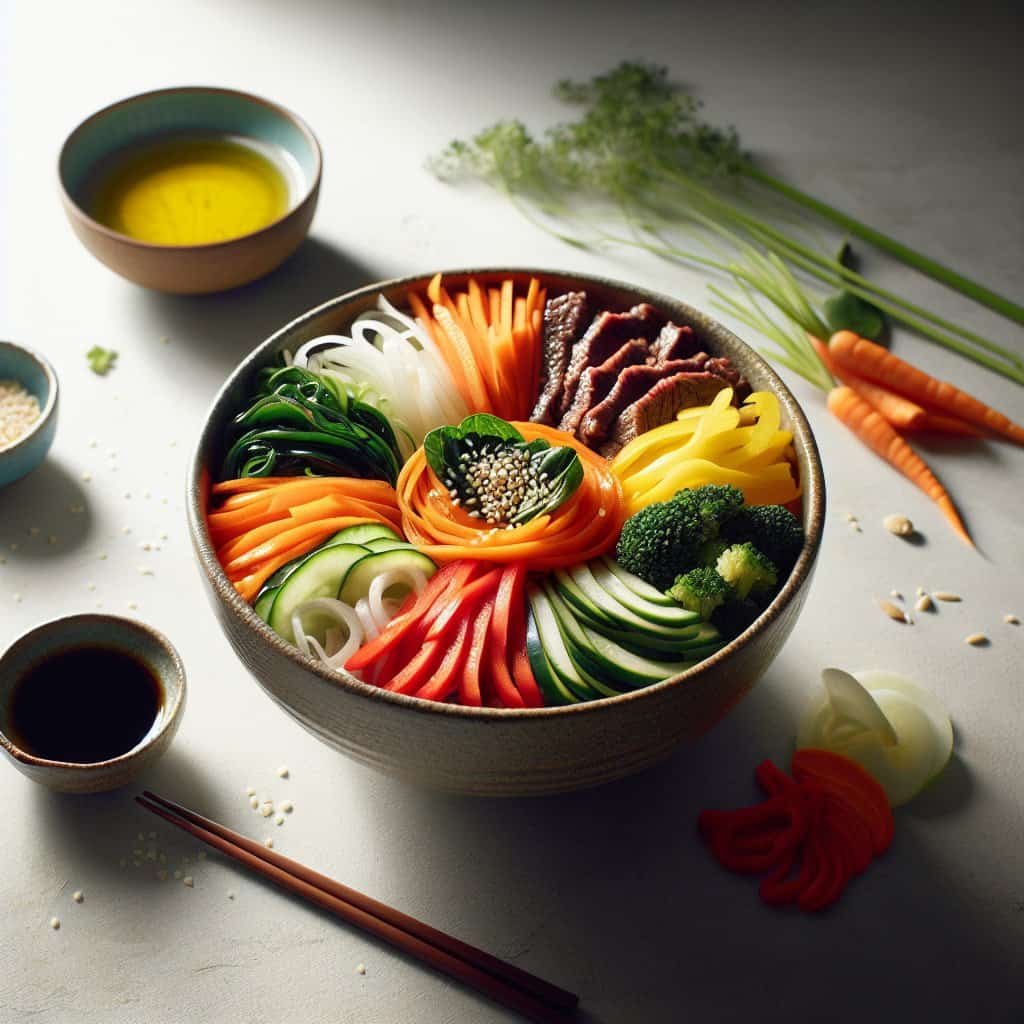Have you ever wondered how perilla oil is used in traditional Korean cuisine? Well, look no further! In this article, we will explore some mouthwatering traditional Korean dishes that creatively incorporate the distinctive flavor of perilla oil. From delectable bibimbap to crispy perilla leaf tempura, get ready to embark on a culinary journey through the vibrant and flavorful world of Korean cooking. So, grab your chopsticks and prepare to tantalize your taste buds with these delightful dishes that are sure to capture your heart.

Bibimbap
Description
Bibimbap is a popular Korean dish that literally translates to “mixed rice.” It is a colorful and nutritious meal that consists of a bed of steamed rice topped with various vegetables, traditionally including carrots, spinach, bean sprouts, mushrooms, and zucchini. Additionally, it may feature protein options such as beef, chicken, or tofu. One of the key ingredients that gives bibimbap its distinct flavor is perilla oil, which is drizzled over the dish just before serving.
Ingredients
The ingredients for bibimbap may vary depending on personal preference and regional variations. However, the common ingredients include:
- Steamed rice
- Carrots (julienned)
- Spinach
- Bean sprouts
- Mushrooms (usually shiitake)
- Zucchini
- Beef (thinly sliced) or chicken/tofu for vegetarian/vegan option
- Eggs (optional)
- Gochujang (Korean chili paste)
- Sesame oil
- Perilla oil
Preparation
To prepare bibimbap, start by cooking the rice according to the package instructions. While the rice is cooking, blanch the spinach and bean sprouts separately in boiling water for a few minutes until they are tender but still vibrant green. Drain and lightly season with salt and sesame oil.
Next, sauté the julienned carrots, mushrooms, and zucchini in a bit of sesame oil until they are slightly softened. Cook the beef or your protein of choice separately until it is cooked through and seasoned with some soy sauce and sesame oil.
To assemble the bibimbap, divide the cooked rice into individual serving bowls. Arrange the cooked vegetables and meat over the rice in separate sections. If desired, top with a fried or sunny-side-up egg. Drizzle a generous amount of gochujang and perilla oil over the toppings.
To enjoy bibimbap, mix all the ingredients together, ensuring that the flavors are evenly distributed. The cracked rice on the bottom of the bowl will become crispy, adding a delightful texture to the dish. The combination of fresh vegetables, savory meat, and the distinct nutty flavor of perilla oil creates a harmonious blend of flavors that will leave you craving for more.
Kimchi Jjigae
Description
Kimchi Jjigae is a spicy and flavorful Korean stew made with fermented kimchi, pork belly, and tofu. It is a staple in Korean cuisine and is known for its comforting and rich taste. Perilla oil is often used to enhance the taste and aroma of this dish.
Ingredients
The ingredients for kimchi jjigae include:
- Kimchi (fermented cabbage)
- Pork belly (or other meat of choice)
- Tofu
- Onion
- Garlic
- Korean chili flakes (gochugaru)
- Sugar
- Perilla oil
- Sesame oil (optional)
Preparation
To make kimchi jjigae, start by sautéing the pork belly in a pot until it is cooked through and slightly crispy. Then, add chopped onion and minced garlic and cook until the onion becomes translucent.
Next, add in the kimchi and its juice, along with a bit of sugar to balance the flavors. Stir everything together and let it simmer for a few minutes to allow the flavors to meld together.
Add the tofu, cut into cubes, into the pot. Simmer for an additional 10-15 minutes until the tofu has absorbed the flavors of the stew.
Just before serving, drizzle some perilla oil over the top of the stew to add an extra layer of nutty aroma. Optionally, you can also sprinkle some sesame oil for extra richness.
Kimchi jjigae is typically enjoyed hot and pairs well with steamed rice. The combination of tangy and spicy kimchi with the tender pork belly and silky tofu creates a warming and flavorful dish that will leave you satisfied.

Kkaennip Jjim
Description
Kkaennip Jjim, also known as steamed perilla leaves, is a popular Korean side dish that highlights the use of perilla oil. Perilla leaves, also known as sesame leaves or shiso leaves, have a distinct flavor that is slightly minty and herbaceous. Steaming them with perilla oil enhances their natural taste and makes them incredibly aromatic.
Ingredients
To make kkaennip jjim, you will need the following ingredients:
- Perilla leaves
- Perilla oil
- Soy sauce
- Sesame seeds
- Garlic (minced)
Preparation
To prepare kkaennip jjim, start by washing the perilla leaves thoroughly and removing any tough stems. Place the leaves in a steamer basket and steam them for 3-5 minutes until they become tender.
In a small mixing bowl, combine perilla oil, soy sauce, minced garlic, and toasted sesame seeds. Mix well to create a flavorful dressing.
Once the perilla leaves are steamed, drizzle the dressing over the top, ensuring that each leaf is evenly coated. The fragrance of the perilla leaves combined with the nutty flavor of perilla oil creates a delightful side dish with a unique taste.
Kkaennip jjim can be served as a side dish alongside your main meal or enjoyed on its own. The tender and aromatic perilla leaves, enhanced by the use of perilla oil, offer a refreshing and flavorful experience.
Ssambap
Description
Ssambap is a traditional Korean dish that translates to “wrapped rice.” It consists of various cooked meat, usually grilled or braised, along with an assortment of vegetables and rice, wrapped in fresh lettuce leaves. Perilla oil is often used as a dipping sauce for the ssambap, adding a distinct nutty flavor.
Ingredients
To make ssambap, you will need:
- Cooked meat of your choice (e.g., grilled beef, pork, or chicken)
- Fresh lettuce leaves
- Rice
- Assorted vegetables (such as sliced cucumbers, bean sprouts, and carrots)
- Perilla oil
- Soybean paste (doenjang)
Preparation
To assemble a delicious ssambap, start by preparing the cooked meat of your choice. You can use leftover grilled or braised meat, or cook it fresh on a grill or stovetop. Slice the meat into thin strips for easy wrapping.
Next, wash and dry the lettuce leaves, removing any damaged or wilted leaves. Cook the rice according to the package instructions, ensuring that it is fluffy and fragrant.
Prepare a platter of assorted vegetables such as sliced cucumbers, blanched bean sprouts, and julienned carrots.
To enjoy ssambap, place a lettuce leaf on your palm and add a spoonful of rice. Then, place a piece of the cooked meat on top, followed by the desired vegetables.
Before wrapping the ssambap, drizzle a small amount of perilla oil or soybean paste on the fillings to enhance the flavors. The perilla oil adds a unique nuttiness while the soybean paste provides a savory depth.
Fold the lettuce leaf into a neat wrap, securing the contents inside. Take a bite and savor the combination of tender meat, crisp vegetables, and fragrant rice, all enhanced by the flavorful addition of perilla oil.
Ssambap is a versatile dish that allows you to customize the fillings to suit your preference. The addition of perilla oil as a dipping sauce adds an extra layer of depth and flavor, making it a delightful and satisfying meal.

Jeon
Description
Jeon is a popular Korean dish consisting of savory pancakes made from various ingredients such as seafood, vegetables, or meat. These pancakes are crispy on the outside and tender on the inside, making them a favorite snack or appetizer. Perilla oil is commonly used to fry jeon, enhancing its flavor and providing a pleasant aroma.
Ingredients
To make jeon, you will need:
- All-purpose flour
- Water or broth
- Eggs
- Various ingredients for the filling (e.g., seafood, green onions, kimchi, zucchini, or mushrooms)
- Salt
- Perilla oil
Preparation
To prepare jeon batter, combine all-purpose flour with water or broth in a bowl. Whisk the mixture until it forms a smooth batter. For extra flavor, you can add a beaten egg to the batter.
Next, prepare the filling for the jeon. Chop the ingredients of your choice into small pieces or julienne them for a uniform size.
Heat a frying pan over medium heat and add a generous amount of perilla oil to the pan. Once the oil is hot, pour a ladleful of the batter onto the pan, spreading it evenly in a circular motion.
Place some of the filling ingredients onto the batter before it sets. Gently press down the filling to ensure it adheres to the batter.
Cook the jeon until the bottom becomes golden brown and crispy. Flip it over carefully using a spatula and cook the other side until it is equally crispy.
Repeat the process with the remaining batter and filling until all the jeon are cooked.
Serve the jeon hot, either on its own or accompanied by a dipping sauce made from soy sauce, vinegar, and sesame oil. The use of perilla oil in frying the jeon adds a delightful nutty aroma and enhances the overall taste experience.
Jeon is a versatile dish that can be customized to suit your taste and preference. From seafood pancake (haemul pajeon) to kimchi pancake (kimchijeon), the options are endless. The addition of perilla oil in this traditional Korean dish elevates its taste and ensures a delightful snacking experience.
Bindaetteok
Description
Bindaetteok, also known as mung bean pancakes, is a popular street food in Korea. These savory pancakes are made from ground mung beans and a variety of vegetables and spices. When cooked, they develop a crispy exterior and a soft, chewy interior. Perilla oil is often used to fry bindaetteok, imparting a unique nutty flavor.
Ingredients
To make bindaetteok, you will need:
- Mung beans
- Vegetables (such as green onions, garlic chives, and sprouts)
- Onion
- Kimchi (optional)
- Salt
- Soy sauce
- Perilla oil
Preparation
Start by soaking the mung beans in water for a few hours or overnight until they become soft. Drain the beans and rinse them thoroughly.
Place the mung beans in a blender or food processor, adding a small amount of water to help blend. Blend until you have a smooth batter consistency.
Finely chop the vegetables and kimchi, if using, and mix them into the mung bean batter. Season the mixture with salt and soy sauce to taste.
Heat a frying pan over medium heat and add a generous amount of perilla oil. Once the oil is hot, pour a ladleful of the batter onto the pan, spreading it evenly in a circular shape.
Cook the bindaetteok until the bottom becomes golden brown and crispy. Flip it over carefully using a spatula, and cook the other side until it is equally crispy.
Repeat the process with the remaining batter until all the bindaetteok are cooked, adding more perilla oil if needed.
Serve the bindaetteok hot, either on its own or accompanied by a dipping sauce made from soy sauce, vinegar, and sesame oil. The use of perilla oil in frying the bindaetteok adds a delightful nuttiness, elevating the flavor profile of this beloved Korean street food.

Kkaepjjang Bap
Description
Kkaepjjang Bap, also known as sesame leaf rice, is a traditional Korean dish that features the use of perilla oil and sesame leaves. This dish is simple yet flavorful, combining the fragrant taste of sesame leaves with the nutty aroma of perilla oil.
Ingredients
To make kkaepjjang bap, you will need:
- Cooked rice
- Sesame leaves (also known as perilla leaves or shiso leaves)
- Perilla oil
- Sesame seeds
- Salt
Preparation
To prepare kkaepjjang bap, start by washing the sesame leaves thoroughly and patting them dry. Remove any tough stems or damaged leaves.
Place a sesame leaf on your palm and add a small spoonful of cooked rice to the center of the leaf. Fold the leaf over the rice, forming a small packet.
Continue this process until all the rice and sesame leaves are used.
Before serving, drizzle a small amount of perilla oil over the rice-filled sesame leaves, ensuring that each packet is lightly coated.
For added flavor, sprinkle some toasted sesame seeds and a pinch of salt over the kkaepjjang bap.
Kkaepjjang bap can be enjoyed as a standalone dish or served as a side to complement other Korean dishes. The combination of nutty perilla oil, fragrant sesame leaves, and fluffy rice creates a delightful harmony of flavors and textures.
Perilla Leaf Kimchi
Description
Perilla Leaf Kimchi, also known as kkaennip kimchi, is a popular variation of kimchi that highlights the unique taste and aroma of perilla leaves. The perilla leaves are fermented along with the traditional kimchi ingredients, resulting in a tangy and slightly spicy dish. Perilla oil is often added to enhance the overall flavor profile of this kimchi.
Ingredients
To make perilla leaf kimchi, you will need:
- Perilla leaves
- Korean radish
- Garlic
- Ginger
- Korean chili flakes (gochugaru)
- Fish sauce or soy sauce
- Perilla oil
- Salt
Preparation
Start by washing the perilla leaves thoroughly and drying them gently with a clean kitchen towel. Remove any damaged leaves or tough stems.
Slice the Korean radish into thin matchstick-like pieces. Mince the garlic and ginger.
In a mixing bowl, combine the garlic, ginger, Korean chili flakes, fish sauce or soy sauce, and a small amount of perilla oil. Mix well to form a paste.
Take a perilla leaf and spread a thin layer of the paste on one side. Place another perilla leaf on top, repeating the process until you have a stack of layered leaves.
Continue layering the leaves, pressing them together gently, until all the perilla leaves are used.
Place the stacked perilla leaves in a glass jar, pressing down firmly to eliminate any air pockets.
Seal the jar and leave it at room temperature for a day or two to allow the fermentation process to begin.
After the initial fermentation, transfer the jar to the refrigerator to continue fermenting. The perilla leaf kimchi can be enjoyed after a few days, but its flavors will continue to develop and intensify over time.
Perilla leaf kimchi is a versatile side dish that can be enjoyed on its own or incorporated into various Korean recipes. Its tangy and slightly spicy taste, enhanced by the unique flavor of perilla oil, makes it a delightful accompaniment to any Korean meal.

Gyeran Mari
Description
Gyeran Mari, also known as rolled egg omelette, is a classic Korean dish that features fluffy eggs rolled around various fillings. It is a popular side dish that is enjoyed as a snack or included in lunchboxes (dosirak). Perilla oil is often used to coat the pan, preventing the eggs from sticking and adding a nutty aroma.
Ingredients
To make gyeran mari, you will need:
- Eggs
- Water or broth
- Salt
- Various fillings (such as finely chopped vegetables or ham)
- Perilla oil
Preparation
Start by cracking the eggs into a mixing bowl and adding water or broth. Whisk the mixture until the eggs are well beaten and frothy. Season with a pinch of salt.
Prepare the desired fillings by finely chopping vegetables or slicing ham into thin strips.
Heat a frying pan over medium heat and add a small amount of perilla oil, ensuring that the pan is evenly coated.
Pour a thin layer of the beaten egg mixture into the pan, tilting the pan to spread the egg evenly. As the egg begins to set, sprinkle the fillings over the top, ensuring an even distribution.
Using a spatula, carefully roll the egg from one end to the other, forming a tight cylinder. Push the rolled egg to one side of the pan.
Repeat the process with the remaining egg mixture and fillings until all the eggs are used.
Once the rolled eggs are cooked and slightly cooled, slice them into bite-sized pieces.
Gyeran mari can be served warm or at room temperature. The use of perilla oil not only prevents the eggs from sticking to the pan but also imparts a delightful nutty aroma to the dish.
Perilla Oil Dipping Sauce
Description
Perilla Oil Dipping Sauce is a simple and versatile condiment that complements various Korean dishes. It is commonly used as a dipping sauce for grilled meats, ssambap, or as a dressing for salads. The distinctive nutty flavor of perilla oil adds depth and richness to this sauce.
Ingredients
To make perilla oil dipping sauce, you will need:
- Perilla oil
- Soy sauce
- Vinegar
- Sesame oil
- Sugar
- Garlic (minced)
- Sesame seeds (optional)
Preparation
In a small mixing bowl, combine perilla oil, soy sauce, vinegar, sesame oil, sugar, minced garlic, and sesame seeds if desired. Mix well until all the ingredients are thoroughly combined.
Adjust the proportions of the ingredients according to your taste preferences. You can increase or decrease the amount of soy sauce, vinegar, or sugar to achieve the desired balance of flavors.
Once the sauce is well-mixed, let it sit for a few minutes to allow the flavors to meld together.
Perilla oil dipping sauce can be served immediately, or you can refrigerate it for a few hours to enhance the flavors further.
This versatile sauce can be used as a dip for grilled meats, ssambap, or poured over salads for added flavor. The nutty aroma and rich taste of perilla oil make this dipping sauce a delightful accompaniment to a wide range of Korean dishes.
In conclusion, traditional Korean cuisine is rich in flavors and showcases the diverse range of ingredients found in the Korean culinary culture. Perilla oil is a key component in many traditional Korean dishes, enhancing their taste and adding depth to the overall flavor profile. From the popular bibimbap to the savory bindaetteok, each dish highlights the unique qualities and versatility of perilla oil. Whether drizzled over rice, used as a dipping sauce, or incorporated into kimchi, perilla oil adds a distinctive nutty flavor and aromatic touch to these traditional Korean recipes. Now, armed with the knowledge of these delicious dishes, you can explore the rich and flavorful world of Korean cuisine.
